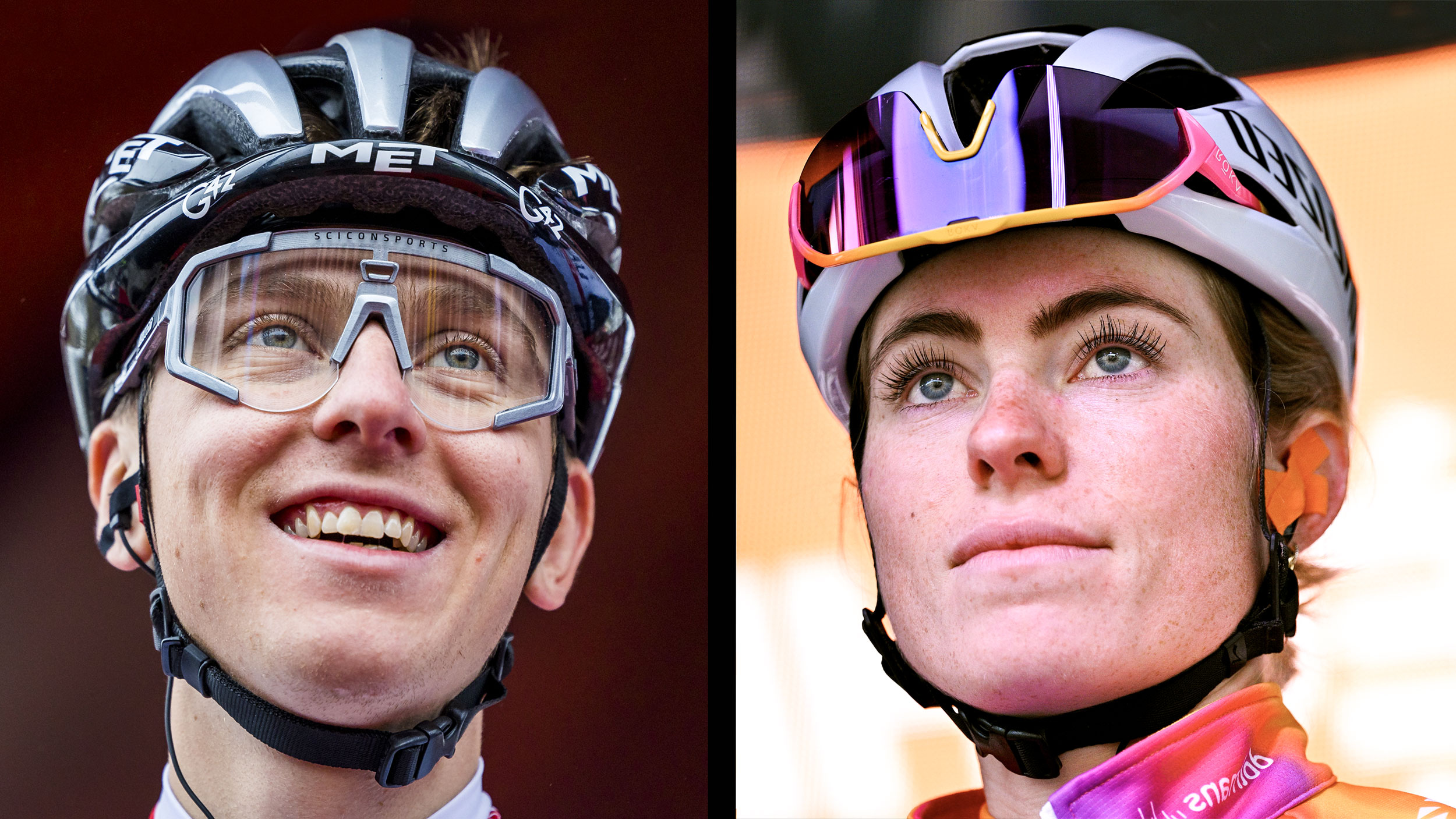
The spring Classics are over and Grand Tour season is about to begin, with the Ardennes triple rounding out two months of thrilling competition on the cobbles and hills of Belgium and France.
The series of one-day races, running from Opening Weekend to the Monuments of the Tour of Flanders, Paris-Roubaix, and Liège-Bastogne-Liège, have brought with them the usual mix of drama, surprise results, and star showdowns.
We've looked back over the spring season to comb through the races, results and reaction to bring you the major takeaways from the campaign. Here are our 10 conclusions from the 2023 spring Classics.
Classics have elevated Pogacar to the realm of the GOATs
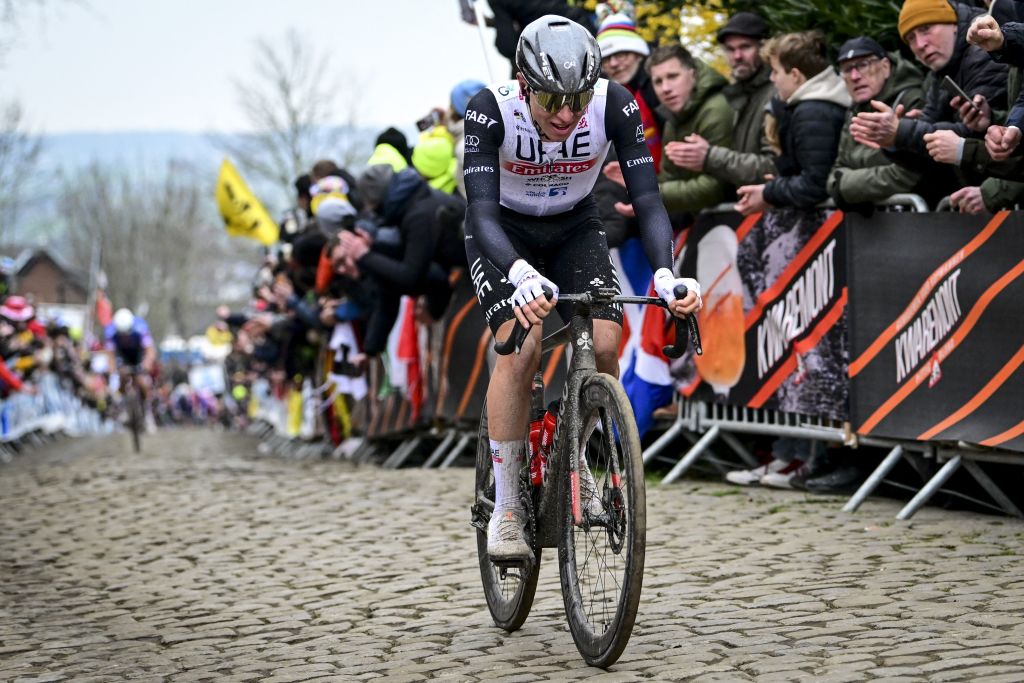
It is difficult to find enough superlatives to describe Tadej Pogačar's Spring Classics campaign and what it means for him and pro cycling's history. His crashing out of Liège-Bastogne-Liège and not being able to go for the Ardennes triple in no way overshadows his impact this season.
Pogačar's presence in the Classics was a breath of fresh air and fans could watch in amazement to see what he could do against the best Classics specialists of the current generation. No other Tour de France champion has done what Pogačar did this spring.
No male rider who has won the Tour de France has also won the Tour of Flanders since Eddy Merckx - until this year. The Classics were widely snubbed by the lightweight climbers who can soar over the Alps and Pyrenees in July. Unless you're Marianne Vos, you haven't won the Tour of Flanders and Flèche Wallonne in the same year. Not even Merckx could manage that. And if you add in a Paris-Nice victory to the equation? Amazing.
It's a fascinating shift away from the narrow specialization that characterised most of the recent Tour winners. During his Tour de France reign, Chris Froome eschewed all of the Spring Classics except Liège-Bastogne-Liège and never featured prominently there. There are a few exceptions - Vincenzo Nibali's win in Milan-San Remo and Brad Wiggins' solid attempt at Paris-Roubaix - but it has been decades since there has been a rider as complete as Tadej Pogačar.
Anyone who can be in contention at Milan-San Remo, ride Mathieu van der Poel off their wheel on the Paterberg in Tour of Flanders, win both cobbled and Ardennes Classics, beat the likes of Wout van Aert and Primož Roglič in a time trial, and out-climb all but one Grand Tour rival before his 25th birthday is most certainly on track for history-making palmares.
It might have been quite the disappointment for the usual favourites, the hard men of Flanders, and he may have turned the races into a power-to-weight ratio game but it was something to watch. Fans can't wait to see if he'll race Paris-Roubaix one year. (LW)
Remco Evenepoel didn't save Soudal-QuickStep's spring
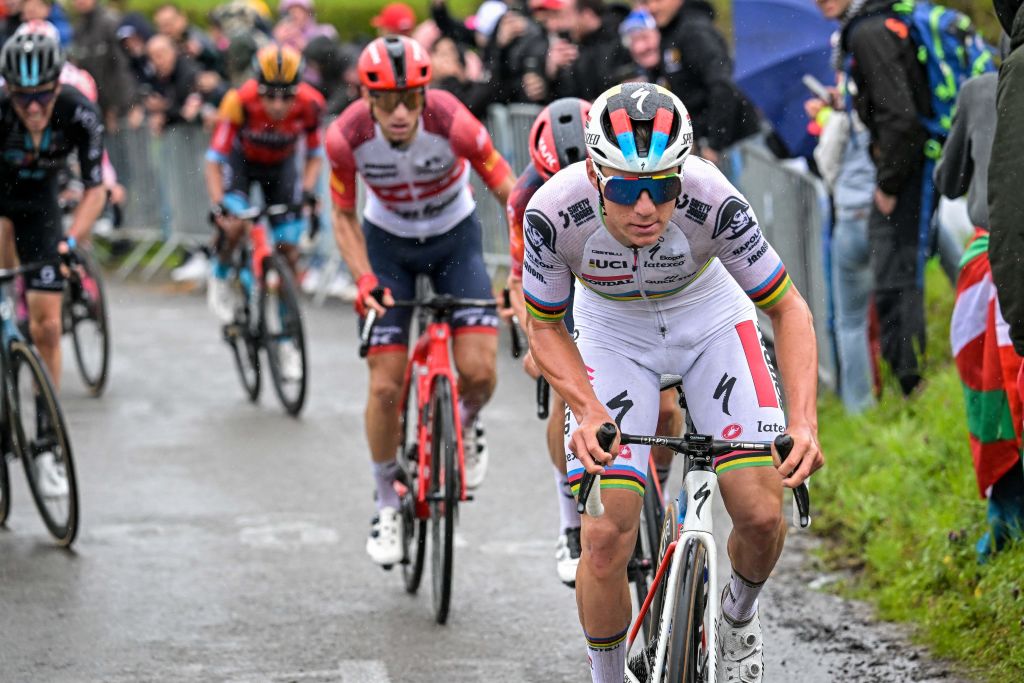
There was a sense of déjà-vu at Liège-Bastogne-Liège, not just in the way Remco Evenepoel soloed home from La Redoute but also in the way he added a last-gasp victory to his Soudal-QuickStep team's dismal Classics campaign. As was the case 12 months ago, Evenepoel was deemed to have 'saved' the Belgian team's Spring, but this time that reading seemed even more strained.
One victory – even a Monument – does not make a Spring, and while it might ease some of the wounds inflicted on the cobbles, it certainly does not stitch together the widening cracks in the Belgian team's one-day armoury. This spring felt worse than the last not just because the results were poorer and the performances more anonymous, but because it had happened for a second year in a row. After so many years of dominance, one bad campaign can be seen as a blip, but two would indicate a trajectory.
It's worth noting that Evenepoel, despite emphatically soloing into Liège, didn't 'save' the team on his own. It was a brilliant collective performance, one of courage and strength, with the team controlling the race all day before launching Evenepoel on La Redoute. It was Ilan Van Wilder who performed that last lead-out, Louis Vervaeke and Pieter Serry having performed immense turns before that. The thing to note is that this is essentially QuickStep's Giro d'Italia team – those three riders were all training on Mount Teide with Evenepoel in the past weeks and will be by his side in Italy.
A Classics campaign saved by a Grand Tour squad... if anything it only underlined the question marks over the future direction of the Belgian team. Evenepoel has been signed to a long-term contract and sponsors have come on board as a result. Team boss Patrick Lefevere has insisted the Classics will always be part of their DNA but, with only nine riders contracted for next season, he has some serious decisions to make this summer as he shapes his team for the future.
A few years ago it seemed that there was always a 'next man up' but that revolving door of Classics contenders appears to have stalled, and even if he did want to invest for the cobbles, there's no one on the market realistically capable of challenging Wout Van Aert, Mathieu van der Poel, and Tadej Pogačar.
No one, perhaps, apart from a certain Remco Evenepoel. (PF)
SD Worx crushed the Classics
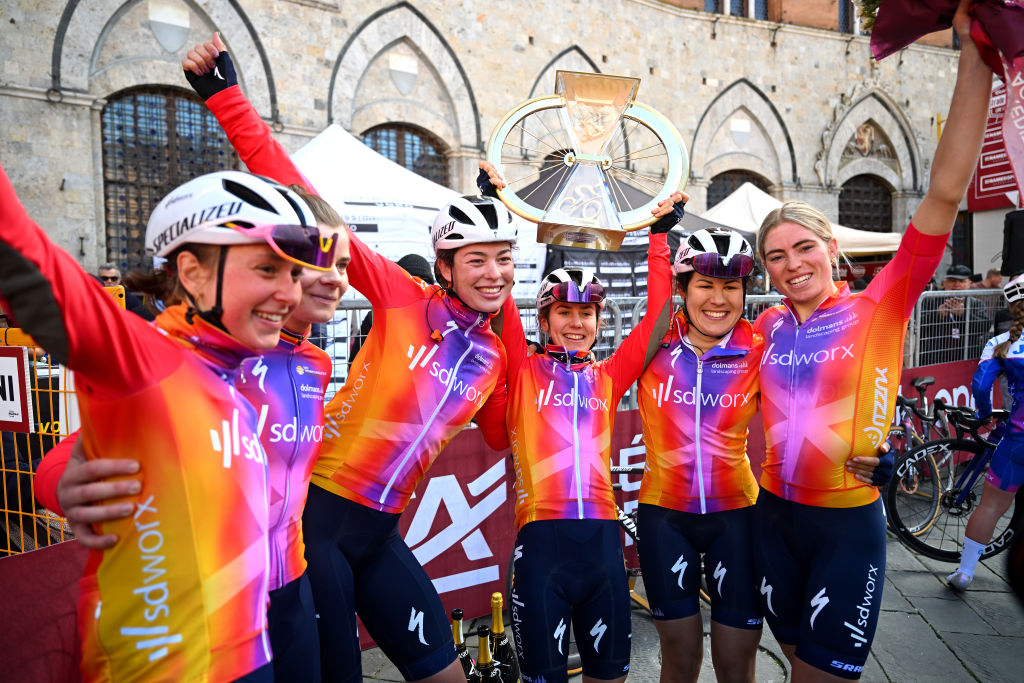
At the start of the year, all eyes were on World Champion Annemiek van Vleuten and how much the World Champion would dominate in the Classics. Last year, Van Vleuten was the top-ranked rider in the world and on the podium of five Classics.
The tide turned this year, and Van Vleuten seems to be suffering either under the curse of the rainbow jersey or, more likely, the sheer strength of SD Worx.
SD Worx won 12 of the 17 one-day races considered to be Spring Classics or semi-classics, with Demi Vollering claiming the Ardennes triple, Strade Bianche and Dwars door Vlaanderen, while Lotte Kopecky mopped up the Tour of Flanders, Omloop het Nieuwsblad and Nokere Koerse. Lorena Wiebes won three – Omloop van het Hageland, Scheldeprijs and Ronde van Drenthe and finally Marlen Reusser won Gent-Wevelgem with a solo show of strength.
Sure, the team miscalculated a few times – in Trofeo Alfredo Binda, where they were left chasing for Wiebes and missed the winning move, and in Paris-Roubaix when the breakaway gained far too much time and Alison Jackson (EF Education-Tibco) won from that group. In the Classic Brugge-De Panne, Pfeiffer Georgi (DSM) slipped away to win solo, but nine WorldTour one-day wins out of 12 is an impressive track record.
The team capped off the spring with Demi Vollering's historic Ardennes triple, they now occupy the top two spots in the UCI rankings with Wiebes and Vollering and are the best team by a huge margin. A huge success no matter which way you look at it and no other team came close. (LW)
Jumbo-Visma's spring wasn't a failure
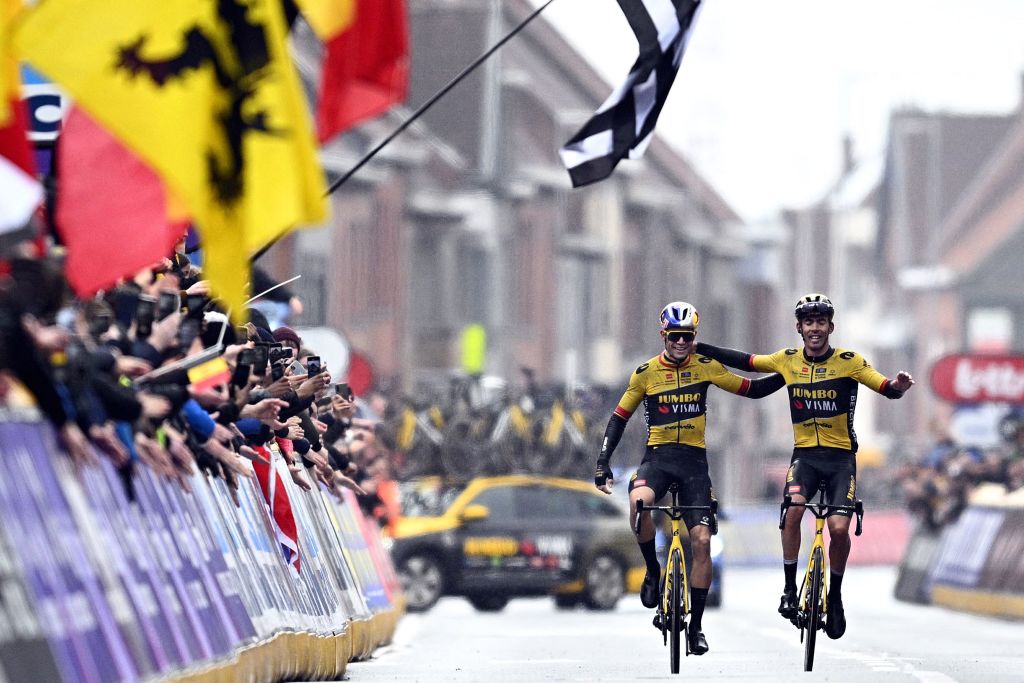
Just as QuickStep's Spring wasn't saved by one result, nor was Jumbo-Visma's ruined by the lack of a Monument. That's what they came for and they'd probably trade in most of those five major cobbled wins for a Tour of Flanders or Paris-Roubaix, but their success up to that point shouldn't be forgotten or diminished.
Jumbo-Visma's ascent to one of the world's leading teams has only happened in the past few years and their emergence as a collective Classics force only in the past two. To win Omloop and Kuurne was one thing, but to win E3 – against Van der Poel and Pogačar – and then to make the opposition look like amateurs at Gent-Wevelgem was jaw-dropping. When Christophe Laporte slipped away to win Dwars door Vlaanderen the whole spring had a feel of inevitability about it. Until it all went wrong at Flanders and Roubaix.
Van Aert was roundly beaten at the Ronde, but at Roubaix, he'll always wonder what might have been as he punctured while on the attack and while distancing Van der Poel on the Carrefour de l'Arbre. Despite what Philippe Gilbert suggested, it seemed like pure unanchored bad luck, and that was only the latest instance.
Earlier on, in the Arenberg Forest, defending champion Dylan van Baarle crashed out and Christophe Laporte dropped from the Van Aert attack with a puncture, tipping the tactical balance back in favour of Van der Poel. There's a fine line between success and 'failure' and misfortune certainly played its part.
Van Aert will look back in frustration but as a whole, the team will take plenty of positives. Van Aert, Laporte, Van Baarle, and Benoot all won races, while Van Hooydonck and Tratnik shone and stood out as potential future shadow favourites. If they can play those numbers again next Spring then a Monument surely awaits. (PF)
Is Jasper Philipsen future Classics star after all?
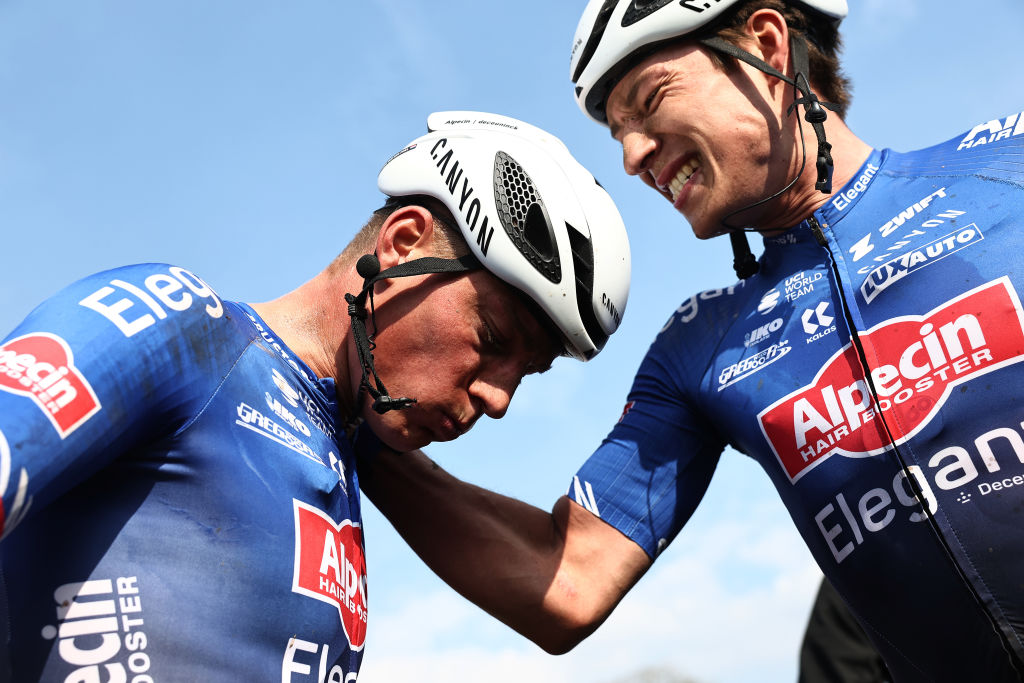
At the start of spring Classics season, all the way back at Opening Weekend in late February, there was one sprinter everyone was talking about. Lotto-Dstny’s 21-year-old talent Arnaud De Lie stormed to an impressive second place at Omloop Het Nieuswblad and a seventh at Kuurne-Brussel-Kuurne, revealing strengths that hadn’t been apparent during his hugely impressive neo-pro season.
The Belgian would go on to take sixth at Dwars door Vlaanderen and seventh at Brabantse Pijl, and he’ll look to take another step up next spring. He wasn’t the only sprint star to show a new dimension to his racing, however.
Alpecin-Deceuninck fast man Jasper Philipsen was one of the revelations of the spring, winning a wind- and rain-hit Classic Brugge-De Panne, taking fourth in Flanders warm-up at Dwars, and then scoring a second title at Scheldeprijs.
Paris-Roubaix saw him deliver his most impressive ride of the spring, though. The 25-year-old, who has fourth places at the junior and U23 races on his palmarès, wasn’t among the major favourites at the Queen of the Classics but put in one of the rides of the Classics to finish second.
Philipsen was up there with teammate and eventual winner Mathieu van der Poel when the decisive move went before the Arenberg at over 100km out and went on to do more than his fair share of the work for his team leader.
He was one of the strongest of the lot behind Van der Poel’s winning move on the Carrefour de l’Arbre and then had the strength left over to outsprint Wout van Aert on the velodrome after celebrating his teammate’s win.
Philipsen has developed into one of the world’s best sprinters since joining Alpecin-Deceuninck two years ago. This spring showed that he’s swiftly ascended to the top tier of the Classics ranks, too. (DO)
Anticipation the name of the game
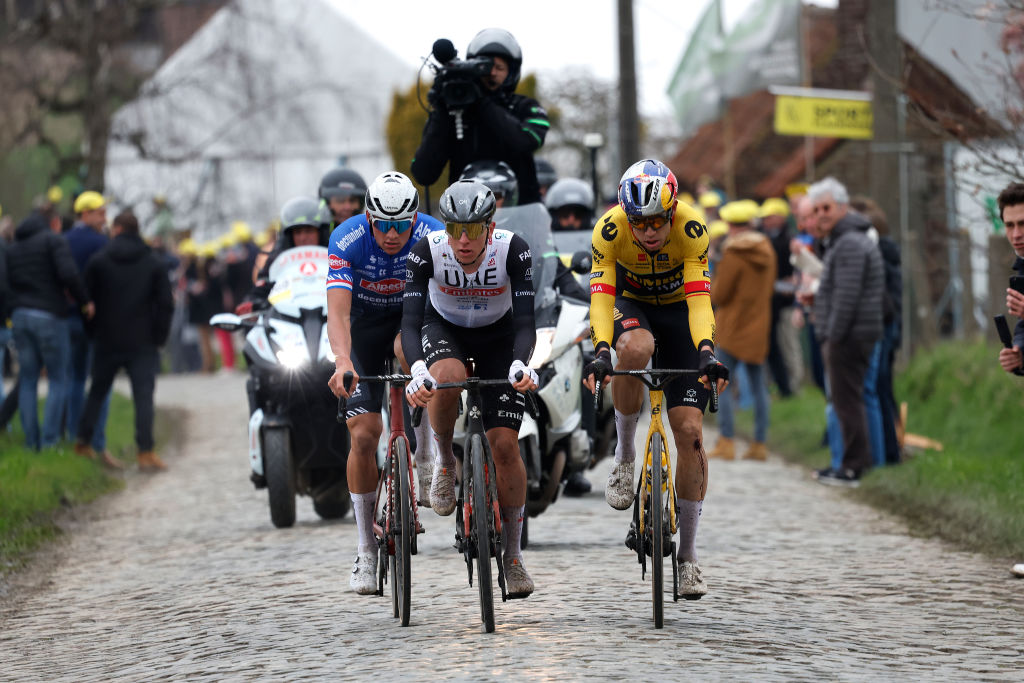
Anticipation. That was the buzzword of the Spring of 2023. We've seen plenty of evidence of the benefits over the years of getting ahead of the race but this year it seemed like everyone was at it.
We all remember Mat Hayman's victory in Roubaix in 2016, and this year we had another feel-good breakaway winner in Alison Jackson after a stunning third edition of the women's race. But it wasn't just the underdogs who were looking to move early; it was top-tier contenders, too.
The reason for this trend was the sheer dominance of a select group of riders - on the men's side this was Tadej Pogačar, Wout van Aert, and Mathieu van der Poel, while on the women's it was due to the stifling collective strength of SD Worx.
After the Jumbo-Visma procession at Gent-Wevelgem, there was inspiration in Oier Lazkano's gutsy runner-up finish from the break in Dwars door Vlaanderen, and then at the Tour of Flanders an extraordinary group went away on the Molenberg, and they almost went all the way – caught by a rampaging Pogačar on the final ascent of the Kwaremont.
At Roubaix a week later, there was so much interest in doing the same that it took 80km for a breakaway to form, and it didn't last long as Van Aert opened the race with more than 100km to go.
In the end, we had the fastest-ever editions of the men's Tour of Flanders and Paris-Roubaix. Tailwinds and tech may have had an impact, but tactics have also made these races full-on from start to finish. (PF)
Wout van Aert is still the likeliest Monuments man
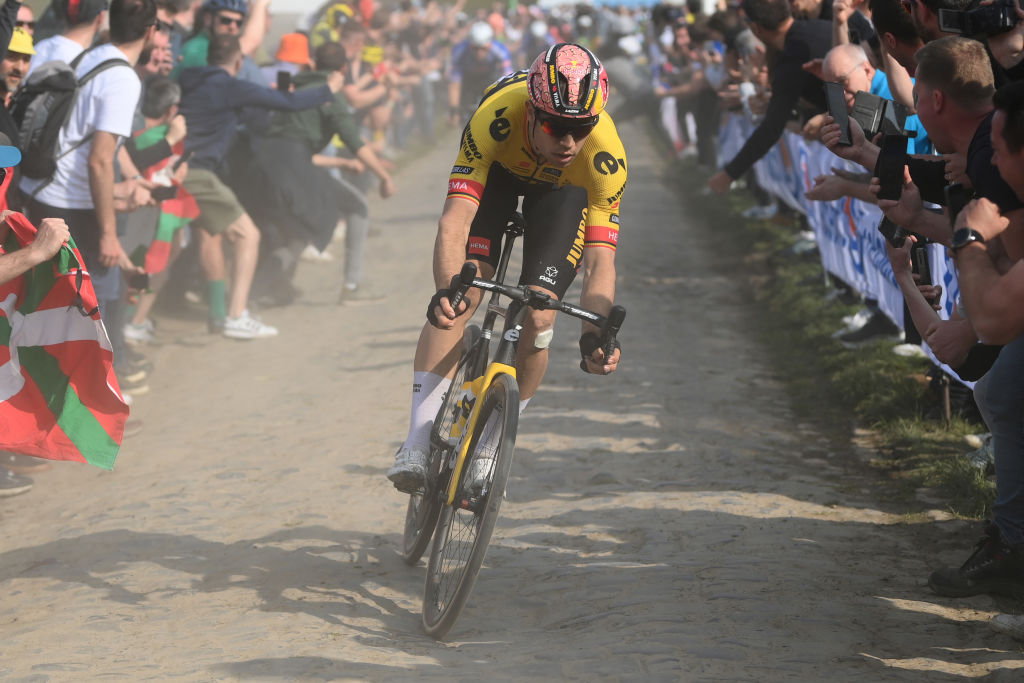
With Tadej Pogačar and Mathieu van der Poel both winning their third separate Monument titles this Spring, the prospect of the full house of five resurfaced. Philippe Gilbert came close before his retirement last year, but still, only Eddy Merckx, Roger De Vlaeminck, and Rik Van Looy have won Milan-San Remo, Tour of Flanders, Paris-Roubaix, Liège-Bastogne-Liège, and Il Lombardia.
In winning Flanders, Pogačar made the successful bridge between Grand Tour champion and cobbled Classics champion, an extraordinary feat in its own right. His form at Flanders was such that you wouldn't have bet against him had he added Roubaix to his schedule, but the truth is that the Hell of the North represents a major obstacle, given the absence of climbs on the parcours.
It would surely take a good deal of targeting and likely an adjustment in body shape, something that would have knock-on effects on his Grand Tour plans. Meanwhile, Milan-San Remo remains a tricky beast that is much harder to tame, as he found when his all-out assault on the Poggio failed to take him clear.
Van der Poel now needs just Liège and Lombardy, but they appear even further out of reach than Pogačar's are to him. Van der Poel finished 10th at the 2020 Il Lombardia but he was still six and a half minutes down. There's climbing potential there but he is very much a Northern Classics powerhouse as it stands, and he would need to change his body type and general ambitions in a much greater way.
Step in Wout van Aert, who trails on just the one Monument title from three years ago, but arguably stands the best chance. He already has San Remo in the bag, while Flanders and Roubaix are clearly within his grasp when the stars align. Unlike Van der Poel, he has shown some extraordinary climbing performances, winning the double Ventoux stage of the 2021 Tour and then dropping everyone but Pogačar and Vingegaard en route to Hautacam last year. He has already been on the Liège podium, and the easier of the two general Lombardia routes would represent a reasonable opportunity, too.
He's lagging behind for now, but he might just have the last laugh. (PF)
Youth trumps experience
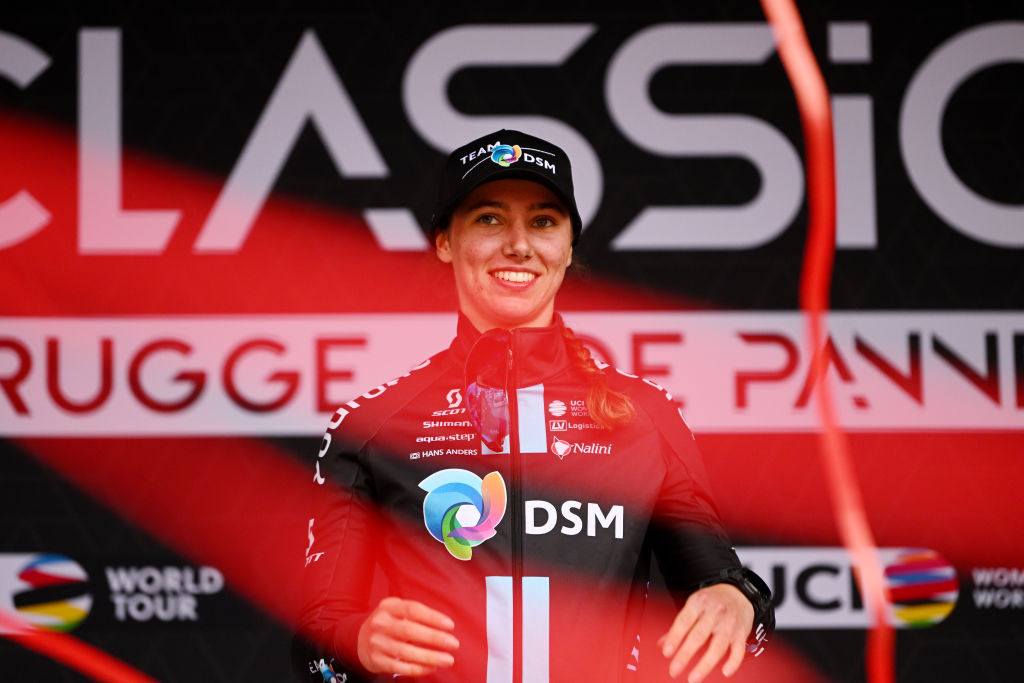
The new generation continued to shine this spring, confirming, as if any proof was needed, that success in professional cycling is coming at a younger and younger age. Demi Vollering and Lotte Kopecky – 26 and 27 respectively – swept up almost all the big prizes this Spring and the scraps went to 21-year-old Shirin Van Anrooij, 25-year-old Silvia Persico, and 22-year-old Pfeiffer Georgi.
It has to be pointed out, of course, that Alison Jackson scored a huge scalp for the veterans at Paris-Roubaix. On the men's side, no rider over the age of 30 won a Classic this spring. The trend was most stark at Liège, where all three members of the podium were 23 – the youngest podium at La Doyenne since 1983.
Throughout the Spring there were new revelations. 22-year-old Ben Healy just missed that Liège podium but, with runner-up finishes at Brabantse Pijl and Amstel Gold Race, he was the revelation of the hilly Classics. On the women's side, 21-year-old Gaia Realini took a podium at Flèche and a top 10 at Liège to announce herself as the sport's most exciting climber.
Quite apart from age, though, was the way the inexperienced generally shone in races that are said to require years of tuition. US riders Neilson Powless and Matteo Jorgenson both shone in their first cobbled Classics, both finishing top 10 at Flanders.
The Ronde itself was one by a rider making just his second appearance in the race, and his fourth appearance on cobblestones. Tadej Pogačar made mistakes at Dwars last year and even made a couple at E3 this year but he quickly corrected them to utterly blitz his way to glory.
We knew it already, but pro cycling is now certainly a young person's game. (PF)
Women's changing of the guard
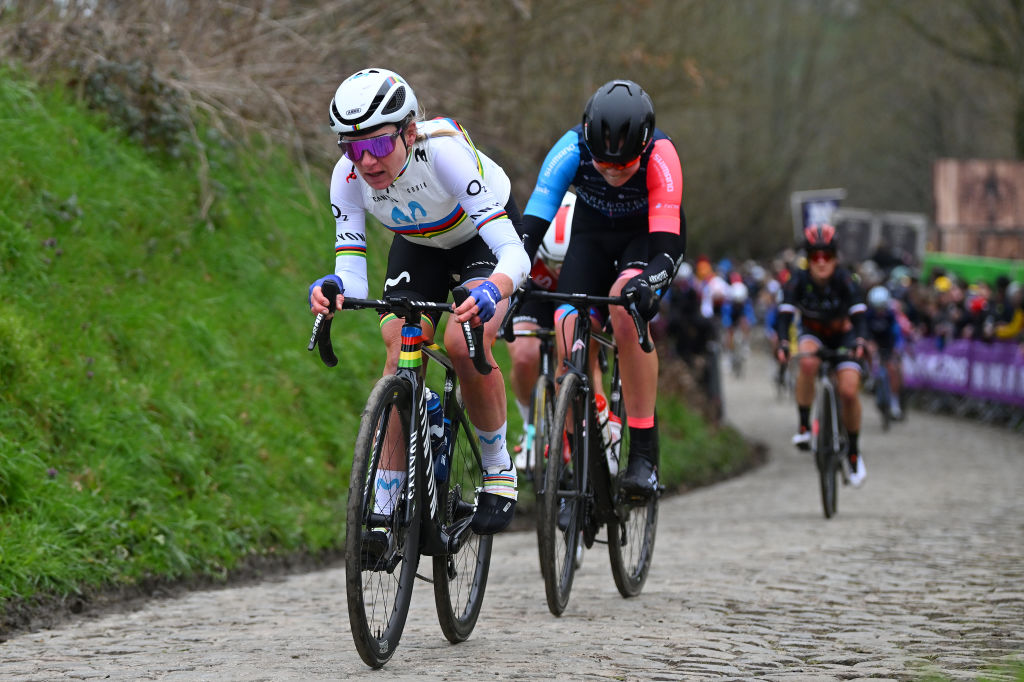
In what was her final competitive appearance at Liège-Bastogne-Liège, Annemiek van Vleuten (Movistar) went down swinging. Unlike the Tour of Flanders, where a crash ended her chance for a record-setting third victory, it was the stronger legs of rising stars in the peloton who kept the Dutch rider from setting the all-time win record at La Doyenne.
Compatriot Demi Vollering (Team SD Worx) took the victory in Liège on Saturday, and with it a sweep of the Ardennes Classics, and now joins Van Vleuten and now-retired Anna van der Breggen in a three-way tie as the only riders with a pair of wins in the season’s final Classic. In fact, Vollering said she was even more motivated to win as it was “the last year I could beat Annemiek”.
In 2022, Van Vleuten won a second Liège-Bastogne-Liège with an all-out attack on the Côte de la Roche-aux-Faucons. This year, she attacked several times during the race, but it came down to the descent as the turning point, and Van Vleuten was a pursuer, not the front runner.
Teammate Liane Lippert helped Van Vleuten put pressure on the peloton as they chased a breakaway of four riders over Côte de La Redoute with under 60km to race. By the time Van Vleuten charged up the Côte de la Roche-aux-Faucons this time out, she was part of a six-rider group at the front, along with Elisa Longo Borghini (Trek-Segafredo), Elise Chabbey (Canyon-Sram), Vollering, Marlen Reusser (SD Worx) and Gaia Realini (Trek-Segafredo).
Reusser kept the pressure on and attacked on the descent, and only Longo Borghini followed. Van Vleuten tried to close the gap on the uncategorised hill after the main climb, but instead, it was Vollering who broke away and bridged to the front 11km from the finish. It was game over as Vollering outsprinted Longo Borghini in Liège.
Van Vleuten trailed in sixth place in her final Classics campaign, one spot better than her ride across the Mur de Huy where Vollering also won.
“I am not feeling bad, I feel like I’m up there like in other years, but others were better," Van Vleuten said after her effort leading up to Liège at Flèche Wallonne. Maybe this signals the changing of the guard. (JT)
2023 was the year of tech innovation
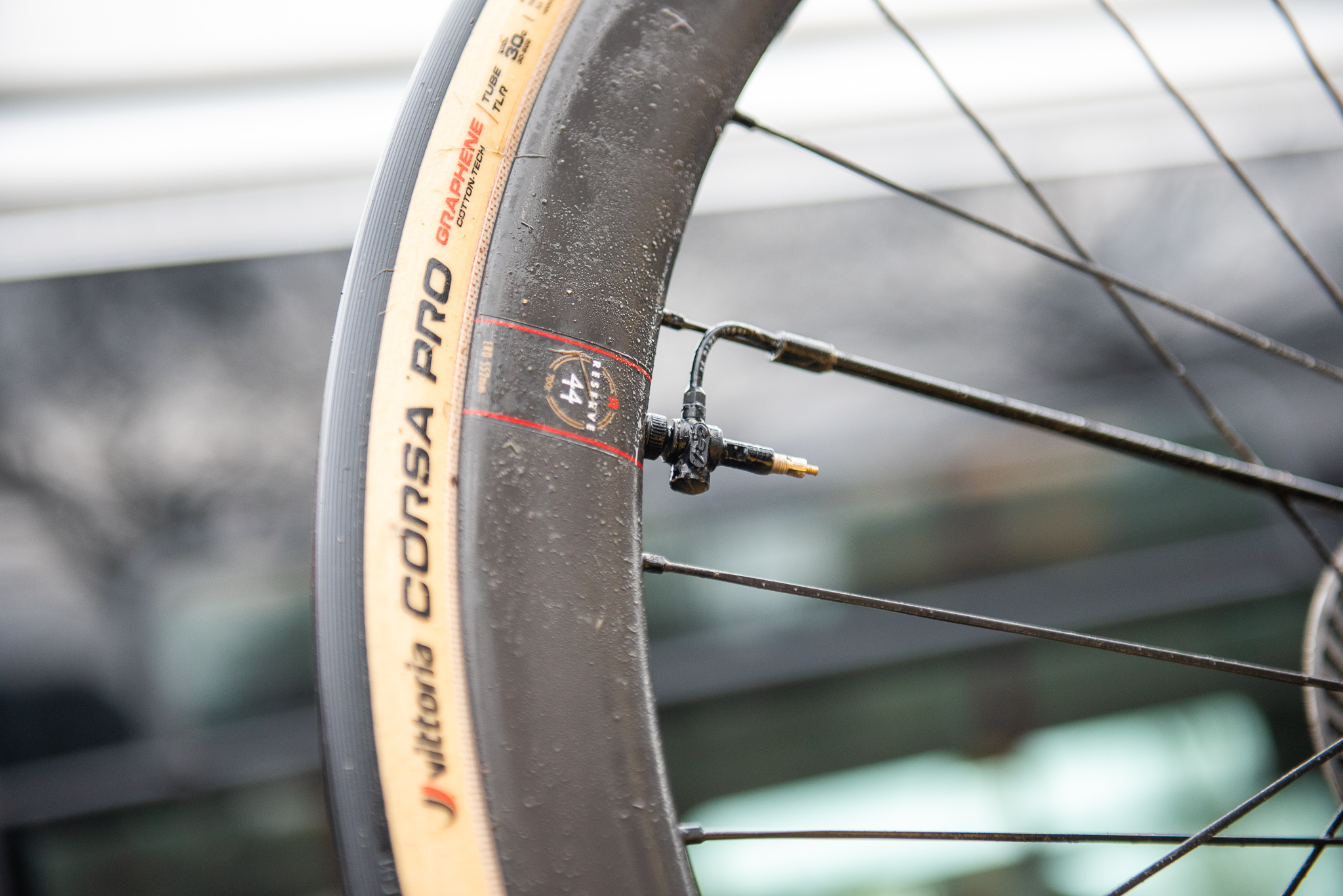
By the start of Opening Weekend cycling's tech obsessives were already reeling from new tech in the WorldTour peloton, with Victor Campanaerts racing on a 62T chainring, strikingly narrow bars and Classified’s internal shifting rear hub. But that was just the beginning.
While Classified’s hub opened the door to a 1x chainring setup, it quickly became obvious that the hub wouldn’t be requisite to ditching the front derailleur. Riders across the men’s and women’s Trek-Segafredo and Jumbo-Visma teams opted to ride 1x for the Classics, quite content with the 12 gears on offer. If the front derailleur is on borrowed time, though, it’s fair to say that the tubular tyre is in the final throes of its long and eventful life in pro cycling.
In a departure from the longstanding history of silk-cased and cotton-walled tubular tyres, the men’s WorldTour peloton had moved wholesale to tubeless tyres by the time of Paris-Roubaix. It’s an innovation that offers obvious advantages in rolling resistance and self-sealing punctures. However, it brought with it debates around safety on cobbled sectors with some teams opting for safer but drag-inducing tubeless inserts and others not.
Despite the safety debates, the men’s Paris-Roubaix podium was entirely occupied by riders using tubeless setups. Meanwhile, in the women’s peloton there seemed to be a few errant tubular tyres, but none saw a glimpse of the podium, and two tubeless setups occupied the top three spots at Paris-Roubaix.
The real tyre talking point of the Classics was even more drastic changes with riders’ rubber; adjustable tyre pressure systems first showcased at Dwars door Vlaanderen that allow riders to increase and lower their tyre pressure live in-race. Jumbo-Visma and Team DSM used rival systems at Paris-Roubaix, with two DSM riders using the Scope Atmoz tyre adjustment system and four Jumbo men using the Gravaa KAPS system.
None of the riders finished in the top rankings of the race, and worse yet Christophe Laporte suffered a flat on the Trouee d’Arenberg, with a lengthy wheel change likely not helped by the technical complications of the Gravaa system.
Few new innovations sweep to the top of the podium on their very first WorldTour outing, aside perhaps from Greg Lemond’s infamous time aerobars. Despite the rocky start, then, it would be hard to rule out the potential of self-adjusting tyres in years to come. (PS)







